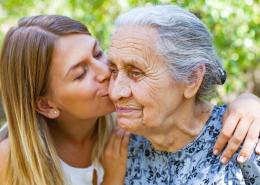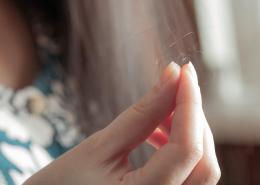Shedding Light on Seasonal Affective Disorder

The winter blues are one thing, but seasonal affective disorder is quite another. Seasonal affective disorder is a form of depression, sometimes referred to as SAD, seasonal depression, or winter depression.
What is Seasonal Affective Disorder?
Seasonal affective disorder (or SAD) is a type of depression that can make patients feel less energetic, moody, and distressed for parts of the year.
Seasonal affective disorder begins and ends around the same time every year, typically inclusive of the fall and winter months. January and February are often when patients in the U.S. experience the most difficulty with symptoms of seasonal affective disorder. In less frequent cases, it can also occur in the spring or early summer. In most cases, it lasts about 40% of the year.
Who gets it and how?
While the exact cause of seasonal affective disorder is unknown, there are several theories about the cause. Most theories attribute SAD to reduced levels of sunlight in the fall and winter months. The shorter days and reduced sunlight exposure are thought to affect the body by:
- Disrupting a person’s circadian rhythm (sleep-wake cycle),
- Triggering lower levels of serotonin, a neurotransmitter that affects mood,
- Producing higher levels of melatonin, a sleep-related hormone.
Risk factors for developing seasonal affective disorder include:
- Being female. SAD is diagnosed more frequently in women compared to men.
- Younger age. Younger adults have a higher risk of SAD than older adults.
- Family history of seasonal affective disorder or other forms of depression.
- Having major depression or bipolar disorder.
- Living far from the equator. It is thought that the further a patient lives from the equator, the more common seasonal affective disorder may be. Residents of cloudy regions can also experience seasonal affective disorders, as well as those who relocate from living closer to the equator to further away from it.
Estimates suggest that about half a million people in the U.S. have seasonal affective disorder, though an additional 10% to 20% may have a milder form of the winter blues.
What are the signs and symptoms?
Symptoms of seasonal affective disorder appear during late fall or early winter and fade away during the spring and summer for most cases. This disorder is not considered a separate disorder from depression, rather it is a type of depression that occurs in a seasonal pattern.
Signs and symptoms may include:
- Feeling depressed most of the day or nearly every day
- Losing interest in activities you previously enjoyed
- Having low energy
- Problems sleeping
- Difficulty concentrating
- Frequent thoughts of death or suicide
- Changes in appetite or weight
- Feeling sluggish, agitated, hopeless, worthless, or guilty
Symptoms specific to winter-onset SAD may include:
- Tiredness or over-energy
- Oversleeping
- Appetite changes, specifically craving carbs
- Weight gain
Symptoms specific to summer-onset SAD may include:
- Trouble sleeping or insomnia
- Poor appetite/weight loss
- Agitation
- Anxiety
If a person thinks they have seasonal affective disorder, it is best to see a doctor for examination.
How is it diagnosed?
The diagnosis for seasonal affective disorder should be made by a healthcare professional. A professional will be able to assess if the presenting symptoms are due to seasonal affective disorder, another type of mood disorder, or something else.
To meet the diagnostic criteria for SAD, a person must meet the full criteria for major depression and the symptoms should coincide with specific seasons – either winter or summer months – for at least 2 years.
While there is no specific test to diagnose SAD, a professional will likely ask a patient about the history of their symptoms. There may also be a physical exam or blood test.
How do you treat SAD?
There are multiple methods to manage seasonal affective disorder. Treatment options may include antidepressant medicines, talk therapy (such as cognitive-behavioral or interpersonal therapy) and phototherapy (light therapy, involves sitting in front of a light therapy box that emits a very bright light).
There are also a few healthy habits a person may do on their own to combat the symptoms of seasonal affective disorder. These include:
- Exercise. Studies show that regular exercise can help boost mood and improve sleep.
- Get as much natural sunlight as possible. Consider doing outdoor chores, sitting near a window and being active early in the daytime to help feel more energetic and less depressed.
- Talk to someone. Confiding in others about symptoms, or getting help from a professional, may be other helpful steps for patients with seasonal affective disorder.
- Eat healthy foods. Eating healthy and well-balanced meals can help keep energy levels up. Stay away from alcohol and drugs, as those substances can make depression worse.
![]()






